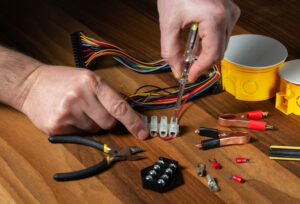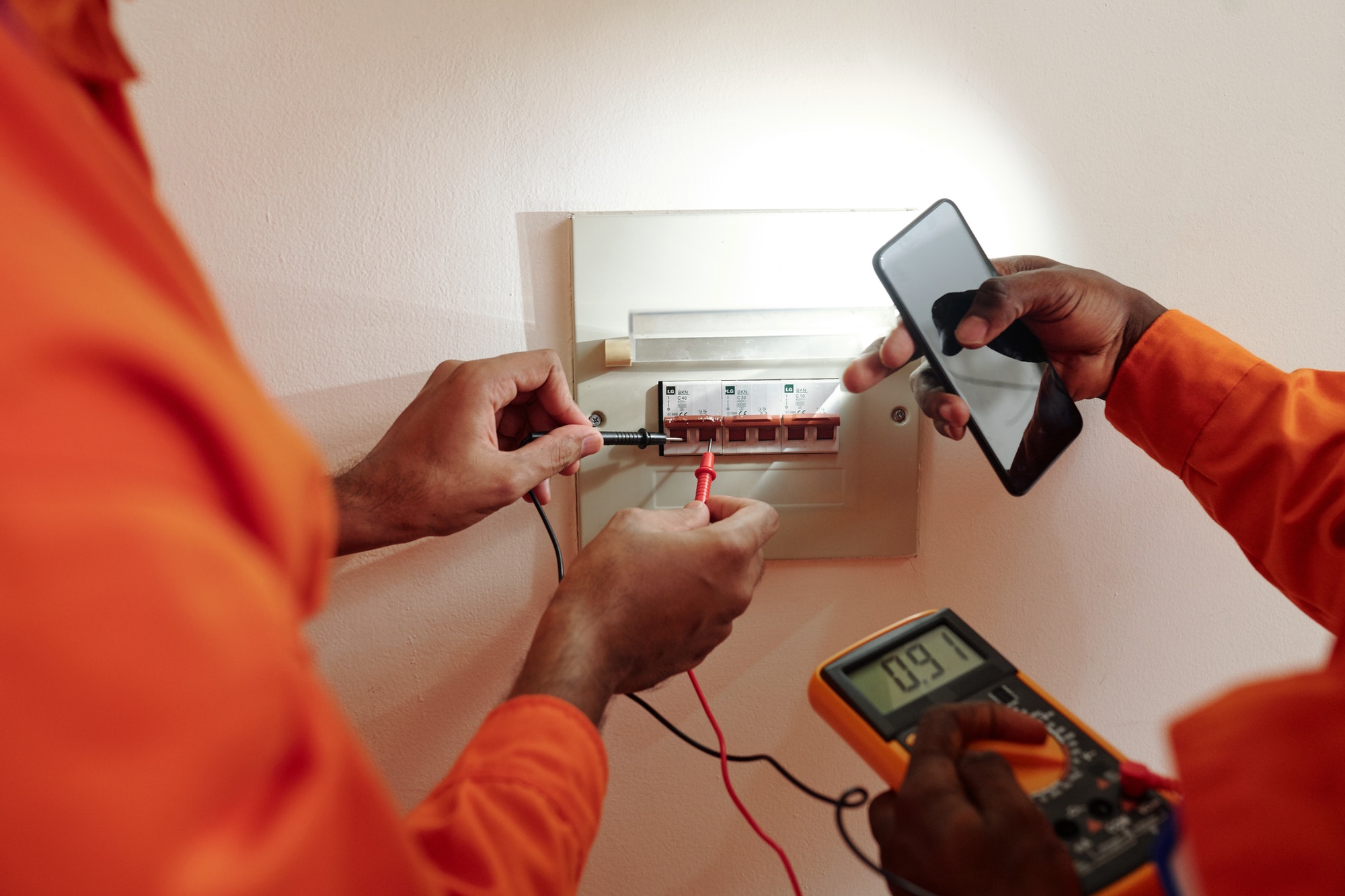During an Electrical Installation Condition Report (EICR) inspection, several common issues can be identified. These issues range from minor defects to significant hazards that require immediate attention. Here’s a detailed look at the most frequently encountered problems:
1. Wiring Deterioration
- Description: Over time, the insulation on electrical wires can degrade due to age, heat, or mechanical damage.
- Risks: Exposed wires can lead to electrical shocks, short circuits, or fires.
- Remedy: Replacing old or damaged wiring with new, properly insulated cables.
2. Overloaded Circuits
- Description: Circuits that carry more electrical load than they are designed for can overheat and cause damage.
- Risks: Increased risk of electrical fires and equipment damage.
- Remedy: Redistributing the load across additional circuits or upgrading the wiring to handle higher loads.
3. Faulty or Non-Compliant Earthing
- Description: Earthing (grounding) issues can arise from corroded, broken, or improperly installed earth connections.
- Risks: Poor earthing can lead to severe electrical shocks and reduce the effectiveness of protective devices like circuit breakers.
- Remedy: Repairing or replacing earthing systems to ensure they meet current standards.
4. Inadequate Circuit Protection
- Description: Lack of appropriate circuit breakers or fuses, or the use of incorrect ratings.
- Risks: Circuits without proper protection can overheat, potentially causing fires or damage to electrical appliances.
- Remedy: Installing appropriate protective devices, such as Residual Current Devices (RCDs) and correctly rated circuit breakers.
5. Improper Installation Practices
- Description: Use of incorrect installation methods or materials, such as junction boxes without covers or cables routed incorrectly.
- Risks: Increased likelihood of electrical faults, overheating, and fire hazards.
- Remedy: Correcting installation practices to comply with safety standards and using appropriate materials.
6. Damaged Electrical Accessories
- Description: Broken or damaged sockets, switches, and light fittings.
- Risks: Damaged accessories can expose live parts, leading to electrical shocks and increased fire risk.
- Remedy: Replacing damaged electrical accessories with new, compliant ones.
7. Inadequate or Missing Labeling
- Description: Lack of proper labeling on electrical panels, circuits, and switches.
- Risks: Difficulty in identifying circuits during maintenance or in an emergency, increasing the risk of errors and accidents.
- Remedy: Properly labeling all electrical components and circuits to ensure clear identification.
8. Outdated or Non-Compliant Installations
- Description: Older installations that do not comply with current electrical safety standards and regulations.
- Risks: Increased likelihood of safety hazards due to outdated practices and materials.
- Remedy: Upgrading electrical installations to meet current standards.
9. Defective Residual Current Devices (RCDs)
- Description: RCDs that do not trip as required during testing.
- Risks: Failure to disconnect the electrical supply in the event of a fault, increasing the risk of electric shock.
- Remedy: Testing RCDs regularly and replacing any defective devices.
10. Overheating Components
- Description: Signs of overheating on cables, connections, or electrical panels.
- Risks: Overheating can lead to insulation failure, short circuits, and potential fires.
- Remedy: Identifying and rectifying the cause of overheating, such as poor connections or overloading.
11. Improper Use of Extension Leads and Adaptors
- Description: Over-reliance on extension leads and multi-way adaptors, often leading to overloaded circuits.
- Risks: Increased fire risk due to overloading and potential tripping hazards.
- Remedy: Installing additional fixed sockets to reduce the need for extension leads and adaptors.
Addressing Common Issues
Regular Inspections: Ensure regular EICR inspections to identify and address issues promptly. Qualified Electricians: Hire qualified and experienced electricians to perform inspections and remedial work. Compliance: Adhere to current electrical safety standards and regulations to ensure installations remain safe and up to date. Maintenance: Implement a proactive maintenance schedule to prevent issues from arising and prolong the life of electrical installations.
By addressing these common issues identified during EICR inspections, property owners and managers can ensure the safety, reliability, and compliance of their electrical installations.






